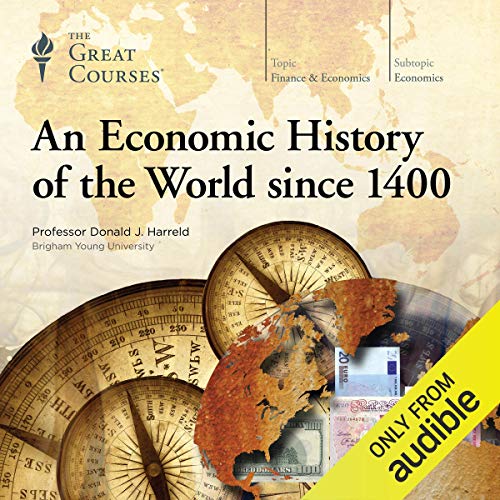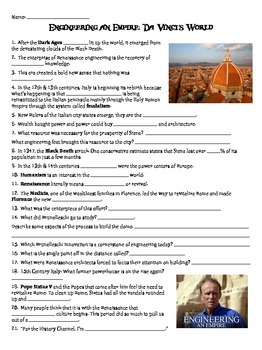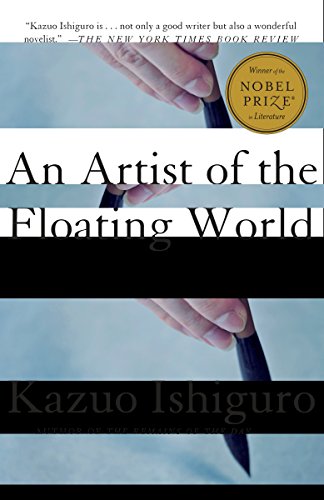An Economic History Of The World
An Economic History of the World is an ambitious and comprehensive study of the history of human economic development from the ancient world to the modern era. It examines the economic, political, and social factors that have shaped the economic fortunes of the world’s regions and nations, from the early agrarian societies of the Fertile Crescent to the emergence of the modern global economy. It provides an in-depth look at the major economic events and developments of the world’s past, from the Industrial Revolution to the Great Recession. It also explores the theories and ideas that have shaped economic thought through the ages, from the mercantilist school of the 17th century to the modern theories of economic development. Written by an international team of experts in the fields of economic history and economic development, An Economic History of the World is an invaluable resource for students, scholars, and anyone interested in the history of the world economy.
Prehistoric and Ancient Economies
From the dawn of humankind, humans have engaged in economic activity. As early humans evolved, they began to develop ways of exchanging goods and services to meet their needs. The earliest economies were based on bartering and trade, and evolved over thousands of years. Prehistoric and ancient economies were based on the use of natural resources, such as hunting, gathering, and farming. With the development of tools and technologies, early humans were able to increase their production and efficiency.
The Ancient Egyptians are credited with having one of the earliest complex economies. They developed methods of agriculture, pottery, weaving, and trade to support their growing population. Ancient China, India, and Mesopotamia also developed complex systems of agriculture, trade, and taxation. As trade routes expanded, these early civilizations were able to exchange goods with other civilizations, leading to economic growth and increased wealth.
Throughout history, economies have continued to evolve and become more complex. The development of money and banking systems, as well as the invention of the printing press, allowed for the widespread exchange of goods and services. The industrial revolution brought about a new era of economic growth, as advances in technology led to mass production and increased efficiency. Today, economies around the world are more interconnected than ever before, as countries rely on each other for goods and services. It is important to understand the history of economic development in order to better understand the global economic system.
Medieval Trade and Globalization
The Middle Ages saw the emergence of a complex and interconnected global trading network, with economic links stretching from Europe to Africa and the Middle East. This period of history saw an unprecedented increase in global trade and commerce, with merchants trading goods and services from all corners of the world. By the late Middle Ages, the world had become a much more interconnected place, with the rise of international trade, the emergence of the Silk Road, and the growth of powerful trade empires. The expansion of trade and commerce during this time had a profound effect on the global economy, leading to a dramatic increase in the economic output of the world. This period of globalization also enabled the spread of new ideas, goods, and services, creating new opportunities for economic growth and development. As the world became increasingly interconnected, it also saw the emergence of new economic powers, with the rise of the Ottoman Empire and the Portuguese Empire among the most significant in this regard. The economic history of the world during the Middle Ages is thus a story of growth, development, and globalization.
The Rise of Nation-States and Capitalism
The world has seen a great deal of economic transformation over the centuries, and the rise of nation-states and capitalism are two of the most important developments in this history. The concept of nation-states, which is based on the idea of a sovereign nation with a distinct population, language, and culture, first emerged in Europe during the seventeenth century. This period also saw the development of capitalism, a system of economic production and exchange that is based on private ownership of the means of production and the pursuit of profit. Together, these two developments have had a major impact on the economies of the world, from the industrial revolution in the eighteenth century to the global economy of the present day.
The rise of nation-states and capitalism are closely linked, as the latter relies on the existence of the former for its success. Nation-states provide the framework and infrastructure necessary for the implementation of capitalist systems, including laws and regulations to protect the rights of private property owners and investors. Nations also provide the infrastructure for transportation and communication, which allows for the efficient exchange of goods and services across borders. Capitalism, in turn, has been instrumental in the development of nation-states. It has provided the capital necessary for the development of infrastructure, as well as the incentive for nations to embrace free trade and open their markets to the world.
The rise of nation-states and capitalism has had a lasting impact on the world’s economic history. It has enabled the emergence of a global economy, and has been instrumental in the development of industries, technological advancements, and financial markets. It has also had an impact on the social and political landscape, with nation-states becoming increasingly powerful and influential. Understanding the history of nation-states and capitalism is essential for understanding the current state of the world’s economy.

The Industrial Revolution and its Impact
The Industrial Revolution was a period of massive change that had a lasting impact on the global economy. It began in the late 18th century in Great Britain and spread to other parts of the world, including the United States. The Industrial Revolution was a period where machines replaced manual labor and production processes were mechanized. This shift in technology allowed for faster and more efficient production of goods, leading to increased economic growth and development. During this time, the world saw an increase in the production of goods, a larger workforce, and new transportation methods. In addition, the Industrial Revolution brought about new economic systems, including capitalism, which allowed for individuals to own and control their own businesses. This new economic system, combined with the mechanization of production processes, allowed for the rapid growth of global economies. As a result, the Industrial Revolution is often credited as the main catalyst for the economic growth of the 19th and 20th centuries. The impact of this period still resonates in the modern world, from the way goods are produced to the way people live and work.
The Great Depression and World War II
The Great Depression of the 1930s and World War II of the 1940s are two of the most important events of the 20th century. During the Great Depression, which was the worst economic depression in history, unemployment skyrocketed and income levels plummeted. The Great Depression caused economic disruption across the globe, with the United States, Germany, and the United Kingdom particularly affected.
World War II broke out in 1939 and lasted until 1945. It was the most devastating conflict in human history and had a colossal impact on the global economy. Nations had to divert resources from production to expenditure on war, leading to high inflation, food shortages, and a drastic drop in international trade. After the war, economies took a long time to recover and did not reach their pre-war levels until the 1950s.
The implications of the Great Depression and World War II are still felt today. Economists have studied the events to understand how to better prepare for and respond to economic crises. The importance of the two events in economic history cannot be overstated, and they continue to be studied and discussed in economic circles today.
Modern Economic Systems and Globalization
The modern economic system is a complex web of different markets, global networks, and a variety of economic policies. The world has seen the rise of powerful transnational corporations, increased global trade, and the emergence of powerful international organizations, such as the World Trade Organization. Globalization has had a dramatic impact on the way economies are managed, and countries around the world have had to adjust to an increasingly interconnected global economy.
From a historical perspective, modern economic systems have emerged from the industrial revolutions of the 19th and 20th centuries. This period saw the emergence of the first global economic systems, with countries adopting different economic models, such as capitalism, socialism, and communism. This led to the creation of multinational corporations and international organizations, and has had a huge influence on the global economy.
In the 21st century, globalization has become a powerful force in the global economy. Trade barriers have been reduced, and countries have become increasingly interconnected, leading to the emergence of a global market. This has led to increased competition and new economic opportunities, as well as increased risks.
The economic history of the world is complex and ever-changing, with different countries and regions adapting to the changing global economy. Despite the challenges, globalization has brought opportunities for growth and development, and has helped make the world a more interconnected and prosperous place.
FAQs About the An Economic History Of The World
Q: What is the main focus of an Economic History of the World?
A: The main focus of an Economic History of the World is to examine the economic development of countries and regions from ancient times to the present day. It looks at the different economic systems, policies, and institutions that have been used throughout history, and how they have contributed to the growth and decline of economies.
Q: What topics are covered in an Economic History of the World?
A: An Economic History of the World covers a wide range of topics, including the economic development of different regions and countries throughout history, the development of economic theories and policies, the evolution of different economic systems, the roles of governments, trade, and finance in economic growth, and the effects of globalization on the world economy.
Q: What sources are used in an Economic History of the World?
A: An Economic History of the World utilizes a variety of sources in order to provide an in-depth examination of the economic development of different regions and countries throughout history. These sources include historical documents, economic data, and scholarly articles. Additionally, the book utilizes a variety of methodological approaches in order to provide an accurate and detailed analysis of the different economic systems and policies utilized throughout history.
Conclusion
An Economic History of the World is an essential resource for anyone interested in the history of economics and its impact on the world. It provides a comprehensive overview of the major economic developments throughout human history, from ancient times to the present day. The book examines how economic forces have shaped the course of human history, and it offers insight into the current state of the global economy. Through this book, readers can gain a better understanding of the complex economic forces that have shaped our world and its future.




